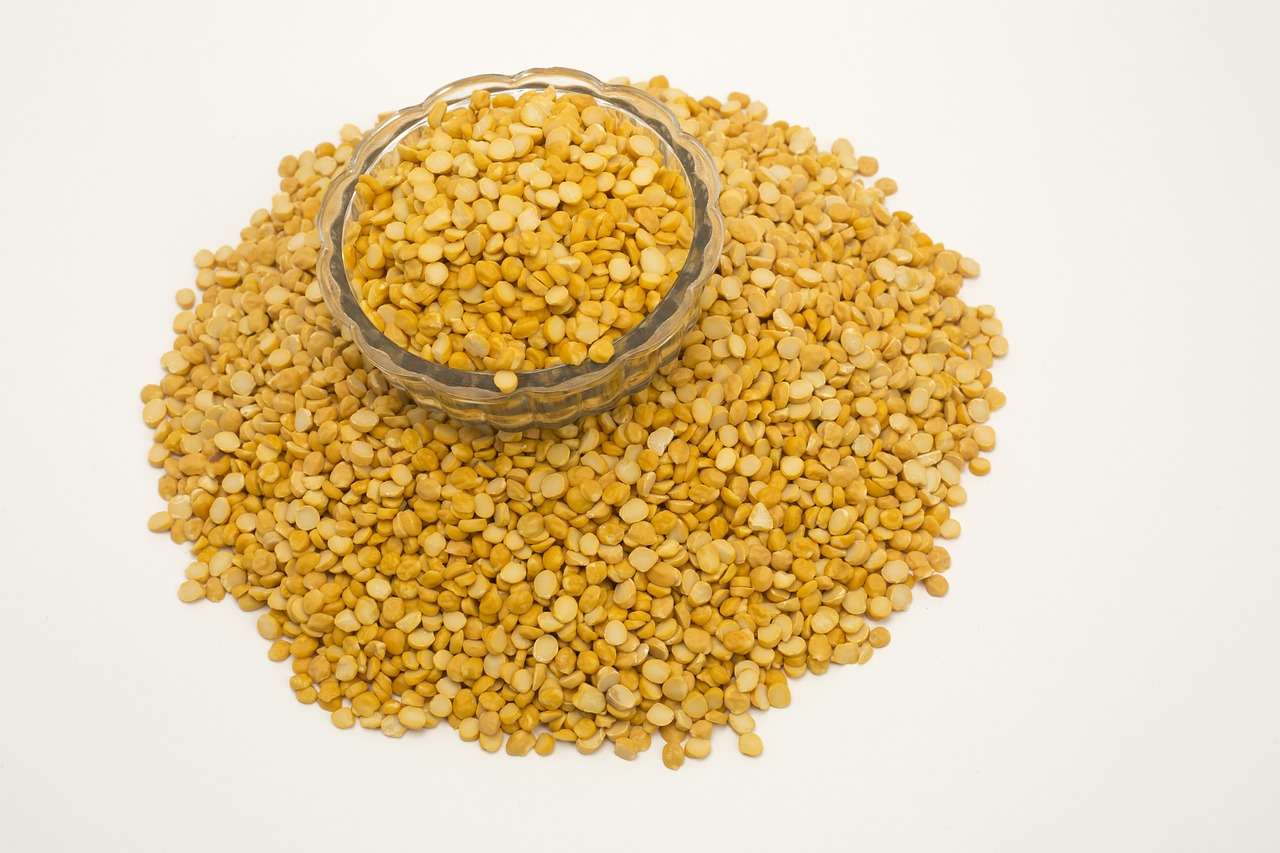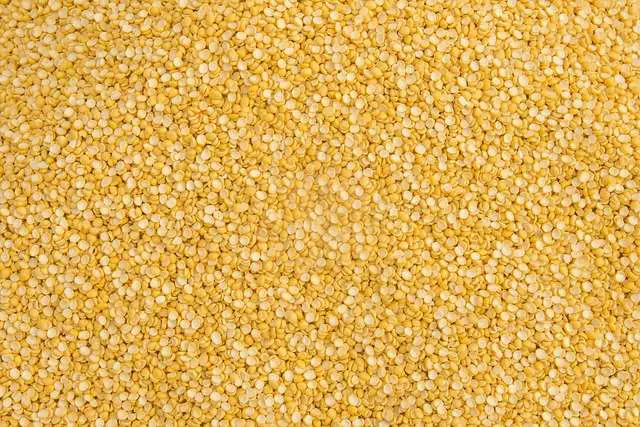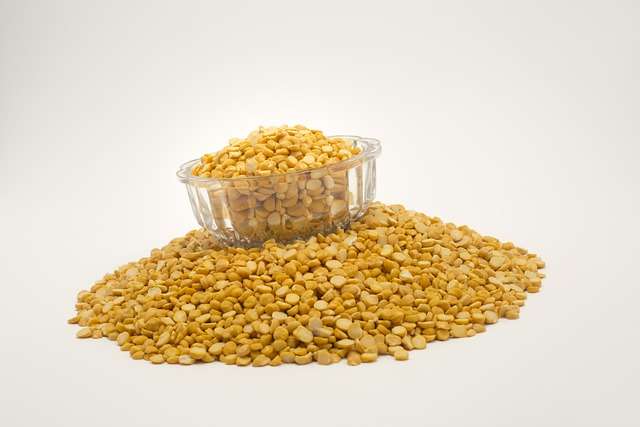Introduction:
A variety of legumes frequently used in cooking is yellow peas. They are a particular variety of field peas (Pisum satium) produced for drying and distribution only. Here are some crucial details and qualities regarding the nutrition facts of yellow split peas.
Yellow peas are a light yellow tint, as the name implies. They have a flat, split shape and are tiny and rounded. Yellow peas may be used to make a variety of recipes by combining them with other seasonings and spices. In both savory and sweet recipes, they are frequently employed.

Yellow peas should be kept in an airtight container in a cold, dry location to maintain their freshness. They can have a lengthy shelf life if stored properly.
Nutrition Facts of Yellow Split Peas:
Like many other foods, yellow peas contain both macro- and micronutrients. These nutrients in yellow peas are broken down as follows:
Macronutrients
Carbohydrates: The majority of the calories in yellow peas come from their carbohydrate content. The body needs carbohydrates, which are a necessary food that gives it energy.
Additionally, they increase the fiber content of yellow peas, which promotes healthy digestion and maintains stable blood sugar levels.
Plant-based protein: Yellow peas are a great source of this type of protein. They have a 25% protein content, which is higher than average for fruits.
This protein is important for several biological processes, including tissue growth and repair, immune system support, and many others.
Those who eat a vegetarian or vegan diet should pay extra attention to this.
Dietary fiber: It is a form of carbohydrate that the body does not digest. Dietary fiber, which is abundant in yellow peas supports digestive health.
It can lower cholesterol levels, control blood sugar levels, and avoid constipation. By encouraging a sense of fullness, high-fiber foods like yellow split peas can also aid with weight management.

Fat: Yellow peas have the lowest fat content of any type, with unsaturated fat making up the majority of it. These fats are thought to be heart-healthy and offer the essential fatty acids the body requires for several processes.
Micronutrients
Vitamins: Yellow peas are a good source of several vitamins, such as:
• B vitamins, which include folate (necessary for DNA synthesis and cell division), thiamine (needed for energy metabolism), and niacin (vital for digestion and skin health).
• Vitamin K: Crucial for healthy bones and blood clotting.
Minerals: Yellow peas are a rich source of several necessary minerals, including:
• Iron, which is necessary for the transport of oxygen in the blood and the generation of overall energy.
• Potassium: Vital for neuron health, muscle contraction, and maintaining adequate fluid balance.
• Magnesium: Vital for the health of bones, the production of energy, and the function of muscles and nerves.
• Phosphorus: Crucial for energy metabolism, DNA synthesis, and bone health.
Antioxidants
Yellow peas contain antioxidants like flavonoids and carotenoids that aid in defending cells against oxidative stress and free radical damage. These substances may be advantageous for your health.

Phytonutrients
Phytonutrients are organic substances that are naturally present in plant-based diets and have a variety of health-enhancing qualities. Phytonutrients found in yellow peas may provide anti-inflammatory and other health benefits.
Health Benefits of Yellow Split Peas:
Due to their nutrition facts of yellow split peas, yellow peas provide several health advantages. The following are five noteworthy health advantages of using yellow peas in your diet:
1. High in fiber for healthy digestion
A great source of dietary fiber is yellow peas. Constipation can be avoided and proper digestion is encouraged by fiber. Additionally, it can support the upkeep of a balanced gut microbiome, which is necessary for general digestive health.
2. Promotes Heart Health
Yellow peas contain fiber, which can help lower levels of LDL (bad) cholesterol and lower the risk of heart disease. Yellow peas’ potassium level can also assist control of blood pressure, further advancing heart health.
3. Plant-Based Protein Sources
Yellow split peas are an excellent source of plant-based protein. They are therefore a fantastic option for vegetarians and vegans who want to eat enough protein. Protein is crucial for bodily function, muscular growth, and tissue repair.
4. Blood Sugar Control
Yellow peas’ fiber and protein content aid in keeping blood sugar levels stable. They reduce the speed at which carbs are digested and absorbed, minimizing spikes and troughs in blood sugar. People with diabetes or those who are at risk of getting the disease can benefit from it.
5. Weight management
The protein and fiber in yellow peas work together to make you feel satiated and full. Yellow peas are a beneficial addition to diets for weight management and weight loss since they can help control hunger and lower overall calorie intake.
How to incorporate Yellow Split Peas in your diet:
Yellow peas are simple and adaptable to include in your diet. Various savory and even sweet dishes can employ these beans. Several methods to savor yellow peas are listed below:
Yellow Split Pea Soup: Soups are the traditional application for yellow peas. By cooking it with vegetables (such as carrots, celery, and onions), herbs, and spices, you can prepare pea soup. Add some ham or bacon for taste if you don’t eat vegetarian or vegan food.
Dal (Indian dish made with peas): Yellow peas are a key component of Indian cooking. To produce delectable dal, prepare food using spices like cumin, coriander, turmeric, and ginger.
Hummus-Like Dip: To make a creamy hummus-like dip, combine cooked yellow peas with garlic, lemon juice, tahini, and olive oil. Enjoy it with vegetable sticks or pita bread.
Curries and stews: Include cooked yellow peas in your preferred curries and stews. They give the meal a creamy mouthfeel and are good at absorbing flavors.
Salad: To add protein and fiber to salads, add cooked and cooled yellow peas. Fresh vegetables, herbs, and vinaigrette dressings go nicely with them.
FAQs:
1. Do yellow and green split peas have the same nutritional value?
No, there are many kinds of split peas with minor color and flavor variations. Green split peas are green, while yellow split peas are yellow.
2. Is it necessary to soak yellow peas before cooking?
Usually, yes, but sometimes no. Cooking times are cut and digestion is aided by soaking.
3. Are yellow peas inherently gluten-free?
Yellow peas are naturally devoid of gluten, making them safe for anyone sensitive to it.
4. How should yellow split peas be stored?
To increase their shelf life, store them in an airtight container in a cold, dry location.
5. Can I use yellow peas in dishes instead of other fruits?
Yes, although the texture and flavor can be a little different, you can frequently substitute other split peas or lentils in recipes.
Conclusion:
And lastly, yellow peas are a wholesome, useful legume with a variety of health advantages because of the nutrition facts of yellow split peas. They are loaded with dietary fiber, vital vitamins, and minerals as well as plant-based protein.
Consuming yellow peas regularly can benefit your digestion, heart, blood sugar, and weight management. They are a useful addition to a balanced and varied diet due to their mild flavor and versatility in several cuisines.
The addition of yellow peas to salads, soups, stews, or other culinary creations is a delightful and healthful method to improve your diet and general health.
